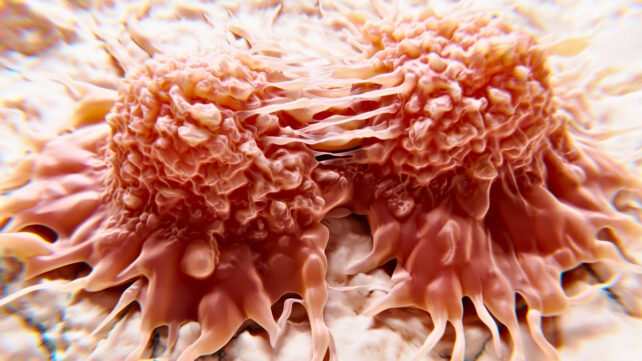Breakthrough Light Therapy Kills Cancer Cells in Just 30 Minutes

In a stunning development that could revolutionize cancer treatment, scientists have unveiled a groundbreaking light-based therapy capable of destroying cancer cells in as little as 30 minutes. This non-invasive, highly targeted approach is showing tremendous promise in clinical trials, offering hope to millions of patients seeking safer, faster, and more effective alternatives to chemotherapy and radiation.
The therapy—based on an advanced form of photodynamic therapy (PDT)—uses laser light to activate special compounds that selectively attack cancer cells while leaving healthy tissue unharmed. This marks one of the most significant leaps forward in oncology, potentially transforming how cancers are treated in the coming decades.
A New Dawn in Cancer Treatment
Traditional cancer treatments, such as chemotherapy and radiation, have long been the mainstay of oncological care. However, they often come with debilitating side effects—hair loss, nausea, fatigue, and damage to healthy organs. While effective in many cases, these treatments can weaken the immune system and reduce a patient’s quality of life.
Light therapy, in contrast, offers a new way to target and eliminate cancer without the systemic toxicity that plagues conventional therapies. Instead of flooding the body with harsh chemicals, light therapy relies on precise wavelengths of light that activate photosensitive drugs inside cancer cells. Once activated, these drugs release reactive oxygen species that quickly destroy the malignant cells—often within minutes.
Recent studies have shown that some of these treatments can eliminate up to 99% of cancer cells in under 30 minutes, making it one of the fastest and most efficient cancer therapies ever developed.
How Light Therapy Works
At the heart of this therapy lies the science of photochemistry—the interaction between light and molecules. The process unfolds in three key steps:
- Administration of a Photosensitizer:
The patient is given a light-sensitive compound known as a photosensitizer. This drug preferentially accumulates in cancer cells due to their higher metabolic activity. - Activation with Light:
Once the drug has built up in the tumor, doctors expose the area to a specific wavelength of light—often from a laser or LED source. The light activates the photosensitizer. - Destruction of Cancer Cells:
The activated drug reacts with oxygen inside the cancer cells, producing highly reactive molecules that destroy the tumor from within. The process is remarkably fast and localized, sparing nearby healthy tissue.
This combination of precision and speed is what makes the therapy so revolutionary. Instead of months of toxic treatment, patients could see visible tumor reduction within a single 30-minute session.
The Science Behind the Breakthrough
While photodynamic therapy has been around for decades, the recent breakthrough lies in the refinement of photosensitizers and light delivery systems. Early PDT treatments were limited by their inability to reach deep-seated tumors or by the risk of damaging nearby tissue.
However, researchers at major institutions such as the University of Texas MD Anderson Cancer Center, Harvard Medical School, and Oxford University have developed new generations of photosensitizers that are:
- Highly selective: They accumulate only in cancerous cells, not in healthy ones.
- Fast-acting: They can be activated within seconds of light exposure.
- Deep-penetrating: They respond to near-infrared light, which can penetrate deeper into tissues than visible light.
Moreover, the integration of nanotechnology has further amplified the therapy’s precision. By encapsulating photosensitizers inside nanoparticles, scientists can deliver them directly to tumors, improving both safety and effectiveness.
One recent study published in Nature Photonics demonstrated that a new nanoparticle-based light therapy eradicated 95% of breast cancer cells in mice within half an hour, with no recurrence observed after several months.
Why 30 Minutes Is So Important
Time is a crucial factor in cancer therapy. Traditional treatments can span weeks or months, giving cancer cells opportunities to mutate, spread, and develop resistance.
The 30-minute window achieved by light therapy offers several game-changing benefits:
- Rapid response: Tumors can be reduced or destroyed in a single outpatient session.
- Less patient stress: Shorter treatment means less emotional and physical strain.
- Fewer hospital visits: Minimizes disruption to daily life and lowers healthcare costs.
- Immediate results: Physicians can visually confirm tumor destruction almost instantly.
For patients with aggressive cancers—like pancreatic or brain tumors—where time is of the essence, a half-hour treatment could mean the difference between remission and progression.
A Painless, Non-Invasive Procedure
Unlike surgery or radiation, this light therapy is minimally invasive. The procedure typically involves inserting a small optical fiber through the skin or body cavity to deliver light directly to the tumor site. In some cases, external light sources can even be used for skin or superficial cancers.
Patients generally remain awake during treatment, experience minimal discomfort, and can often return home the same day. There is little to no scarring, and because the therapy doesn’t rely on systemic drugs, side effects are minimal—typically just mild swelling or redness in the treated area.
Types of Cancers Being Treated
Researchers have successfully tested light therapy on a wide range of cancers, including:
- Skin cancer (basal cell and squamous cell carcinoma)
- Breast cancer
- Lung cancer
- Prostate cancer
- Head and neck cancers
- Esophageal cancer
- Pancreatic cancer
In each case, the therapy has shown promising results—either shrinking tumors significantly or eliminating them entirely. Clinical trials are now expanding to explore its use in metastatic cancers (those that spread throughout the body).
Recent Clinical Success Stories
Several hospitals and research institutions have reported remarkable outcomes from light therapy trials.
At the University College London (UCL), a study using photoactivated drugs to treat prostate cancer saw half of participants achieve complete remission after just one session. Many of these patients were able to avoid surgery or radiation altogether.
Meanwhile, scientists at Stanford University used a novel “molecular light switch” that only activates inside tumors, ensuring zero damage to healthy tissue. Their preclinical results showed tumor eradication in as little as 20 minutes.
Another team at the Karolinska Institute in Sweden is using a specialized laser combined with a near-infrared dye that can penetrate several centimeters into tissue. Their early-phase human trials reported a 90% success rate in reducing tumor size after one 30-minute exposure.
Combining Light Therapy with AI and Imaging
One of the most exciting aspects of this new frontier is how it integrates with artificial intelligence and advanced imaging technologies. AI algorithms can precisely map tumor boundaries and determine the optimal angle, duration, and wavelength of light exposure for each patient.
When combined with real-time MRI or PET scans, doctors can literally watch as tumors shrink during the session. This level of personalization marks a huge leap forward in precision medicine—tailoring treatment down to the cellular level.
Advantages Over Traditional Treatments
Here’s why experts believe light therapy could soon rival or even replace conventional cancer treatments:
| Traditional Treatments | Breakthrough Light Therapy |
| Chemotherapy can damage healthy cells | Targets only cancerous cells |
| Often requires months of treatment | Can work in under 30 minutes |
| Causes severe side effects | Minimal discomfort |
| High recurrence rates | Lower risk of relapse |
| Expensive and hospital-based | Outpatient, cost-effective |
The simplicity and efficiency of light therapy make it an especially attractive option for developing countries, where access to high-end cancer facilities is limited.
Challenges and Limitations
Despite the excitement, light therapy still faces a few hurdles before it becomes mainstream.
- Depth of light penetration:
Light cannot easily reach tumors deep inside the body. Scientists are working on fiber-optic and ultrasound-assisted solutions to overcome this. - Cost of advanced equipment:
The lasers and nanomaterials used in therapy can be expensive, although costs are expected to fall with wider adoption. - Regulatory approvals:
Since many new photosensitizers are still experimental, full FDA approval may take several years. - Limited awareness:
Many doctors and patients are not yet familiar with light-based oncology, which could delay its integration into standard care.
However, these challenges are being rapidly addressed. Several biotech companies have already submitted data to regulatory agencies, and fast-track approvals could be on the horizon.
The Role of Nanotechnology in Enhancing Results
Nanoparticles are revolutionizing how light therapy works. By attaching photosensitizers to nanoscale carriers, scientists can ensure that the compounds remain inactive until they reach the tumor.
Some nanoparticles are even designed to glow when activated, giving doctors visual confirmation of treatment progress. Others can carry dual payloads—combining light-activated drugs with immune-boosting agents for a one-two punch against cancer.
This innovation makes treatment not only faster but also smarter, creating a new category known as photoimmunotherapy. Early tests have shown that it not only destroys cancer cells but also stimulates the immune system to recognize and attack any remaining malignant cells.
Patient Testimonials and Real-World Results
Patients who have undergone experimental light therapy report overwhelmingly positive experiences. Many describe it as “painless and liberating” compared to their previous chemotherapy or surgery.
One patient with early-stage throat cancer, treated at a London clinic, said his tumor vanished within days and he was able to eat and speak normally again after only one session. Another, a breast cancer patient in Japan, shared that her tumor shrank by 80% after a single half-hour light exposure—without hair loss or fatigue.
These stories highlight the therapy’s potential to not just extend life, but to improve its quality.
The Future: Personalized Light-Based Oncology
As technology advances, light therapy is poised to become a cornerstone of personalized cancer care. Future iterations may involve wearable light patches for skin cancers, injectable micro-lights for internal tumors, and even smartphone-controlled devices for home-based therapy.
Researchers envision a future where each patient receives a customized combination of photosensitizers, light wavelengths, and doses—optimized by AI for maximum effect and minimum risk.
The integration of gene editing, nanomedicine, and photonics could even lead to hybrid treatments that both kill cancer cells and repair damaged DNA, offering the possibility of a full cure rather than remission.
Global Investment and FDA Outlook
Pharmaceutical giants and biotech startups are racing to bring light therapy products to market. Companies in the U.S., Japan, South Korea, and the U.K. are investing millions into developing portable devices and next-generation light-activated drugs.
The U.S. Food and Drug Administration (FDA) has already approved a few photodynamic therapies for specific cancers, such as skin and esophageal cancer, and more are expected to follow soon. With growing clinical success and public demand, experts predict that a broad-spectrum light-based cancer therapy could receive full FDA clearance within the next five years.
Conclusion: Lighting the Way to a Cancer-Free Future
The promise of light therapy is nothing short of revolutionary. In just 30 minutes, this innovative treatment can do what once took months of grueling chemotherapy—destroying cancer cells quickly, safely, and effectively.
By combining the precision of laser technology with the power of molecular medicine, scientists are ushering in a new era of cancer treatment—one that replaces pain and fear with hope and healing.
While more research and trials are underway, the evidence so far points to one clear truth: light could be the future of the fight against cancer. With each new breakthrough, humanity steps closer to a world where cancer can be defeated not by poison or surgery, but by the gentle yet powerful beam of light.




